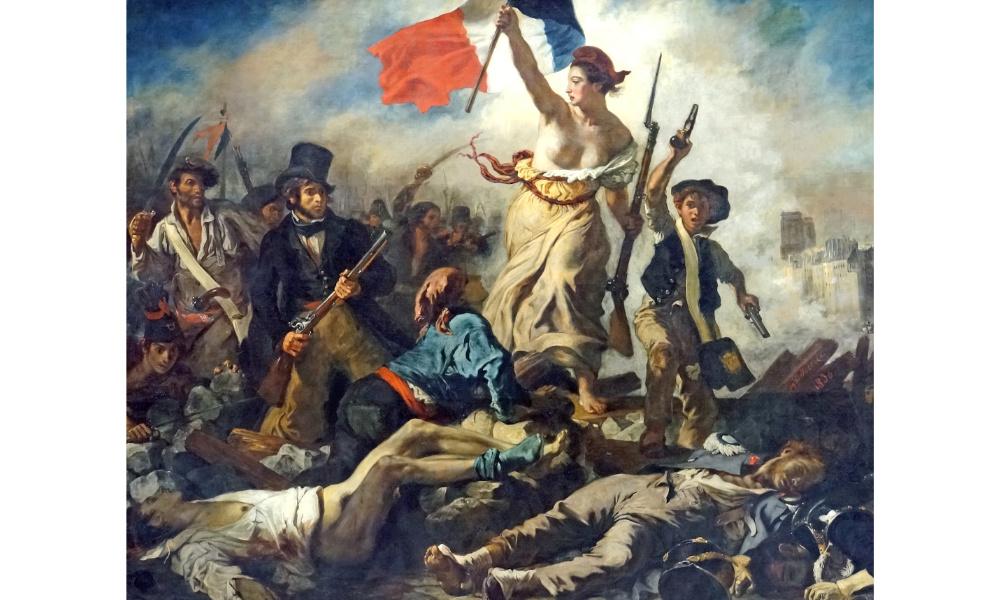“Liberty Leading the People” (French: “La Liberté guidant le people”) is a masterpiece painting that captured the essence of the French Revolution, which was a defining moment in European history. The painting is an allegory that depicts the symbolic figure of Liberty leading a group of people, with a French flag in her hand, in a march towards freedom. The painting is a vivid representation of the struggle of the French people to overthrow the monarchy and establish a democratic republic. The figure of Liberty in the painting is portrayed as a heroic and inspiring figure, embodying the spirit of the Revolution and the aspirations of the people.
Eugene Delacroix, the artist who created this masterpiece, was inspired by the events of the July Revolution of 1830, which saw the overthrow of King Charles X and the establishment of the July Monarchy. The painting was intended to commemorate the triumph of the French people over the forces of oppression and tyranny, and to inspire future generations to fight for their rights and freedom.
The composition of the painting is remarkable, with the figure of Liberty placed in the foreground, dominating the scene with her imposing figure and heroic pose. Her clothing, with the red, white, and blue colors of the French flag, and her Phrygian cap, a symbol of liberty, further enhance her iconic status. The people marching behind her are portrayed in various states of excitement, with some carrying weapons and others waving flags, as they follow their leader towards freedom.
The bare breasts of Liberty were not merely an accidental detail but a deliberate choice by the artist to enhance the message of the painting. The painter wanted to portray the idea of freedom and revolution in a bold and powerful manner, and the nudity of Liberty served as a symbolic representation of that concept. The bare breasts of Liberty also served as a nod to classical Greek and Roman art, which often portrayed goddesses and other figures with exposed breasts. In this way, Delacroix was paying homage to the tradition of Western art while simultaneously subverting it with his revolutionary message. Furthermore, the bare breasts of Liberty can also be interpreted as a rejection of traditional gender roles and societal expectations. The painting was created during a time when women’s rights and equality were being fiercely debated, and the portrayal of Liberty as a powerful and heroic figure with exposed breasts challenged the patriarchal norms of the time.
Delacroix’s use of color is particularly noteworthy in this painting. The red, white, and blue colors of the French flag are prominently featured, symbolizing the ideals of liberty, equality, and fraternity. The use of light and shadow creates a sense of drama and depth, further enhancing the emotional impact of the painting.
The painting’s historical significance cannot be overstated. It is a powerful reminder of the importance of freedom, democracy, and the fight for human rights. The painting has become an enduring symbol of the French Revolution, and its influence can be seen in many other works of art, literature, and popular culture.
In conclusion, “Liberty Leading the People” is a masterpiece of art that captures the spirit and ideals of the French Revolution. Delacroix’s genius lies in his ability to create a painting that is both beautiful and deeply meaningful. The painting continues to inspire and empower people around the world, reminding us of the importance of liberty, equality, and democracy. Its message is as relevant today as it was over 180 years ago, and it will continue to inspire future generations to fight for their rights and freedom.
Links:



